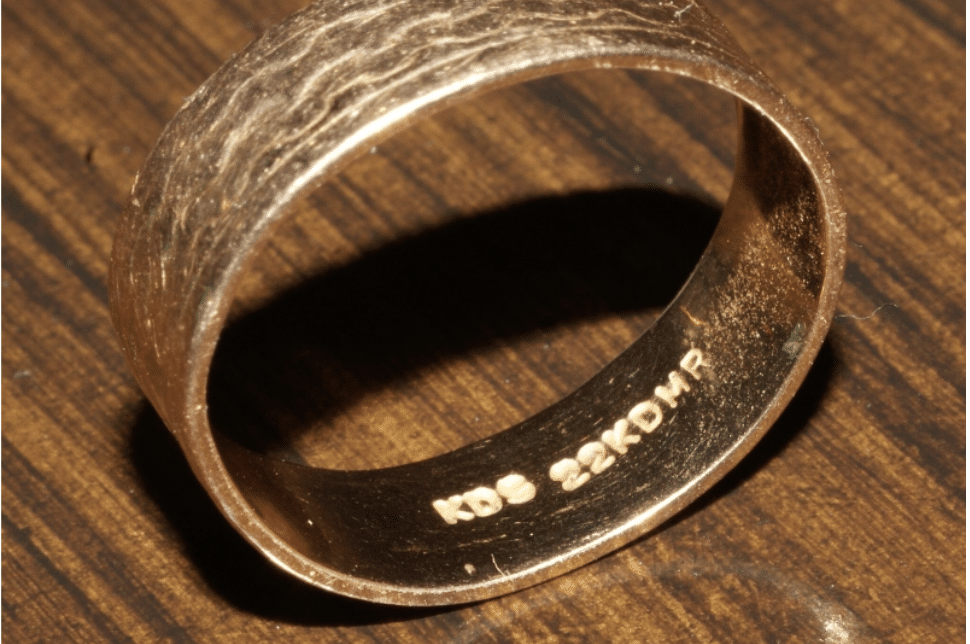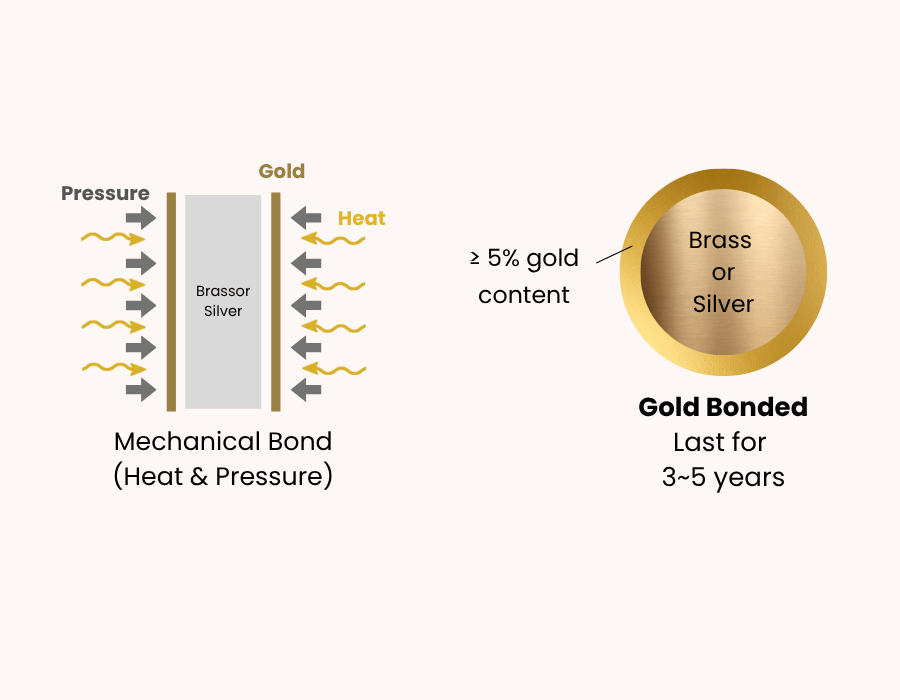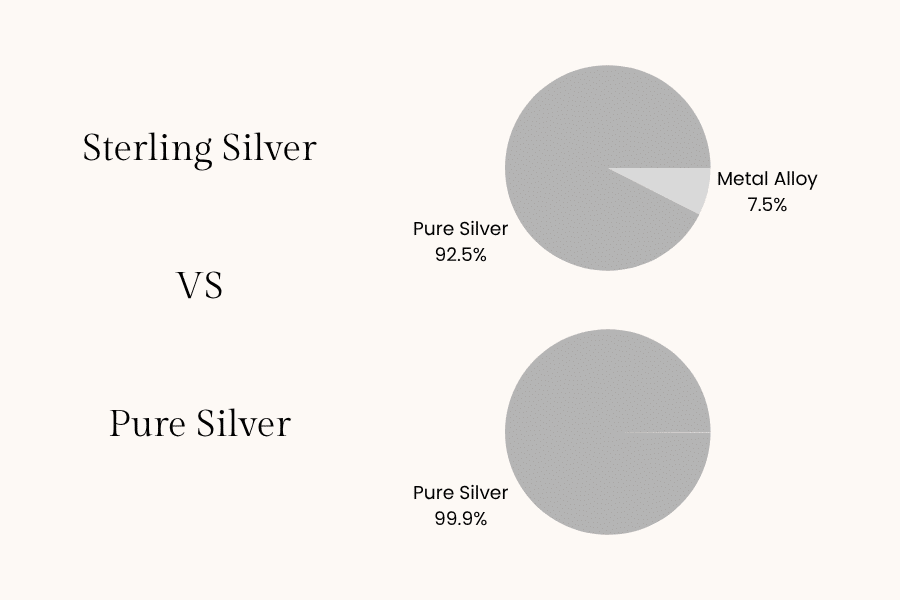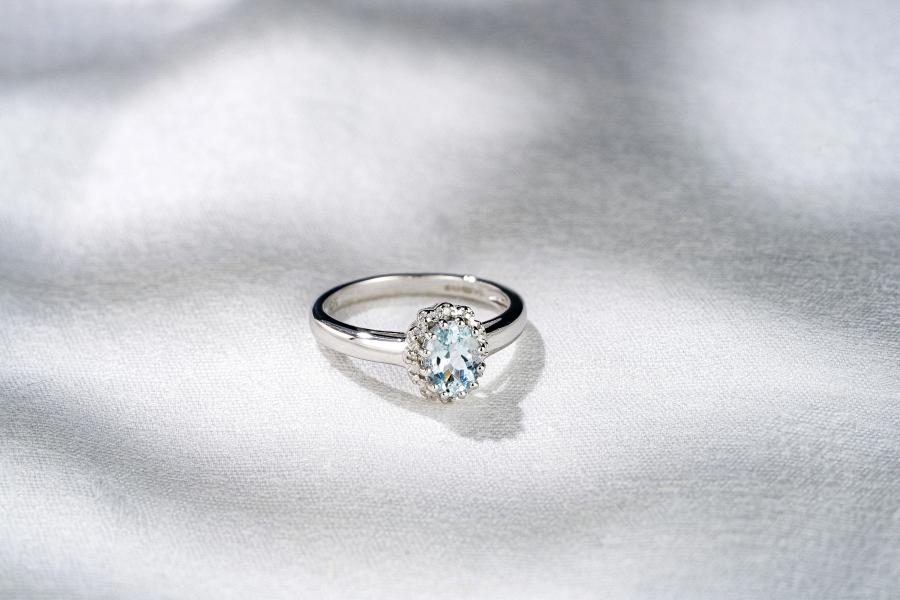Jewelry hallmarks give you more details on rings, necklaces, and other wearable accessories. Specifically, the jewelry metal composition. Knowing the letters and numbers on the stamp let you know the potential value of a piece.
This guide goes into detail on the stamp’s characters to help you immediately know the metal used in making jewelry.
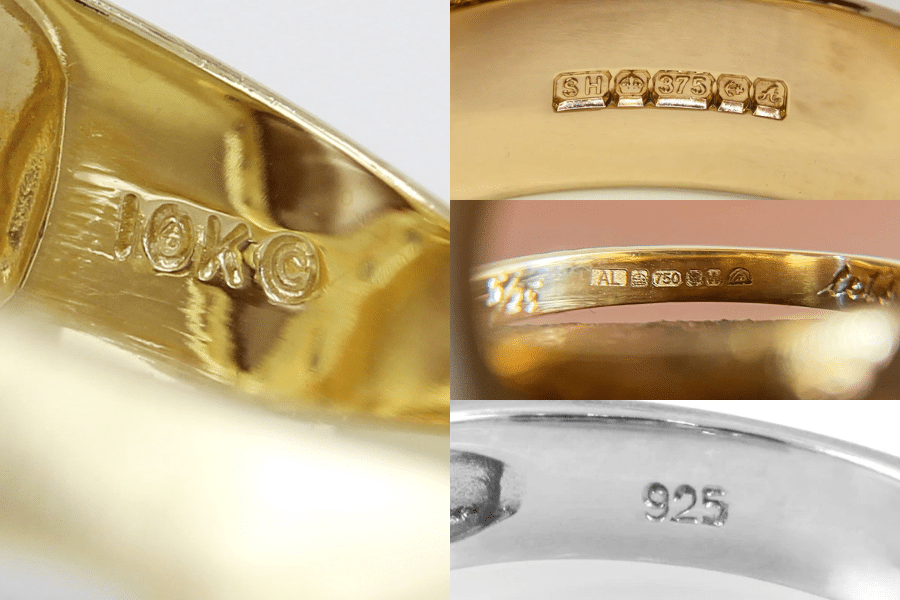
What is Jewelry Stamps/Hallmarks?
Jewelry stamps, often referred to as hallmarks, are official markings found on jewelry that certify the material composition of the item, ensuring its authenticity and quality. These marks reveal important details about the precious metal content. A company’s jewelry quality management should always make sure the marks(if there is any) are correct & honest to meet international trade standards and comply with laws regarding gold or silver purity.
Jewelry hallmarks can also provide assurances about the piece’s manufacture. A stamp for example can indicate whether a gold item is solid gold or gold-plated. Gold plating can directly impact a piece’s market value and durability. Understanding these markings allows buyers and collectors to make more informed decisions.
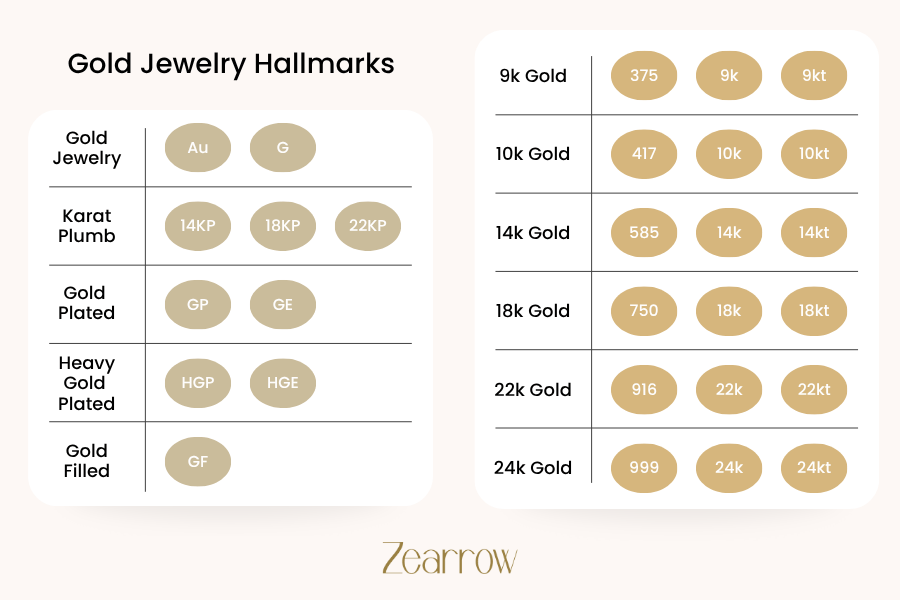
Solid Gold Jewelry Hallmarks
This section covers the most common letter markings on gold jewelry
9karat gold hallmarks
- 9k/9kt
- 375
- 37.5% pure gold
9K or 9Kt jewelry stamps show a piece with 37.5% pure gold. It is mixed with metals like copper or zinc to make it tougher. Another similar stamp is 375, which indicates the jewelry’s 37.5% gold purity level.
10karat gold hallmarks
- 10k/10kt
- 417
- 41.7% pure gold + alloy
Marked with ” 417,” this jewelry trademark indicates 41.7% pure gold with the remaining weight a mix of various metals. This combination of metal gives more wear resistance and strength to the piece.
14karat gold hallmarks
- 14k/14kt
- 585
- 58.5% pure gold + alloy
14k marks mean jewelry with 58.5% gold purity level and a mixture of allows for better durability and balanced cost. 585 jewelry consists of non-ferrous materials like silver or zinc to also achieve an attractive color and malleability.
18karat gold hallmarks
- 18k/18kt
- 750
- 75.0% pure gold + alloy
Shown as “750,” this gold stamp indicates 75.0% pure gold. The large amount of gold composition produces a much stronger yellow tone than those with lesser karats.
22karat gold hallmarks
- 22k/22kt
- 916
- 91.6% pure gold + alloy
Jewelry marked “916” or 22k shows 91.6% gold purity. Jewelry with a small amount of other mixed metal results in a richer yellow color saturation. Thanks to the added metals such as zinc, silver, or copper, it is still highly durable.
24karat gold hallmarks
- 24k/24kt
- 999
- 99.9% pure gold + alloy
Jewelry with “999” hallmarks indicates a piece made of 99.9% pure gold. Bracelets, earrings, rings, and other types of accessories with this purity level are soft due to the lack of secondary metal. Since 999 jewelry stamps are pure gold, they are considered investment pieces instead of wearable accessories.
Stamps for Plated Gold Jewelry
G
G is one of the identifying hallmarks of gold jewelry. Pieces with this letter indicate a mix of gold in it, meaning jewelry with this stamp does NOT imply a 99.9% gold purity level.
Au
Au is the chemical element of gold and is short for the Latin translation of the metal “aurum.” This is one of the identifying hallmarks of gold jewelry, indicating that the piece contains a mixture of gold, not necessarily 100% gold.
KP
Meaning of “plumb”, meaning the gold proportion is exact, and the product is solid gold. For example, “18KP” means the jewelry is made of 75% solid gold, not gold plated.
Jewelry “P” stamps are short for plumb, a term in the jewelry industry that shows gold’s exact purity level. An 18K P hallmark ring is made of 75% pure gold. Note that P gold stamps and markings mean a piece is not gold plates since it has that specific purity level indicated by its karat.
GP/GE
A GP jewelry hallmark means it has a gold plating applied over a base metal(gold plated/gold electroplated). This is the same for jewelry GE marks since the letters are short for gold electroplated. Gold plating usually has a thickness of 0.17 to 2.5 microns.
HGP/HGE
The H for this jewelry hallmark means “heavy” or “heavy gold plating/heavy gold electroplating.” It indicates a thicker gold plating over the base metal, usually more than 2.5 microns.
GF
GF jewelry marks are short for gold-filled jewelry. This mark indicates a much thicker layer of gold bonded over a base metal. A GF piece usually comprises 5% of its total weight in gold.
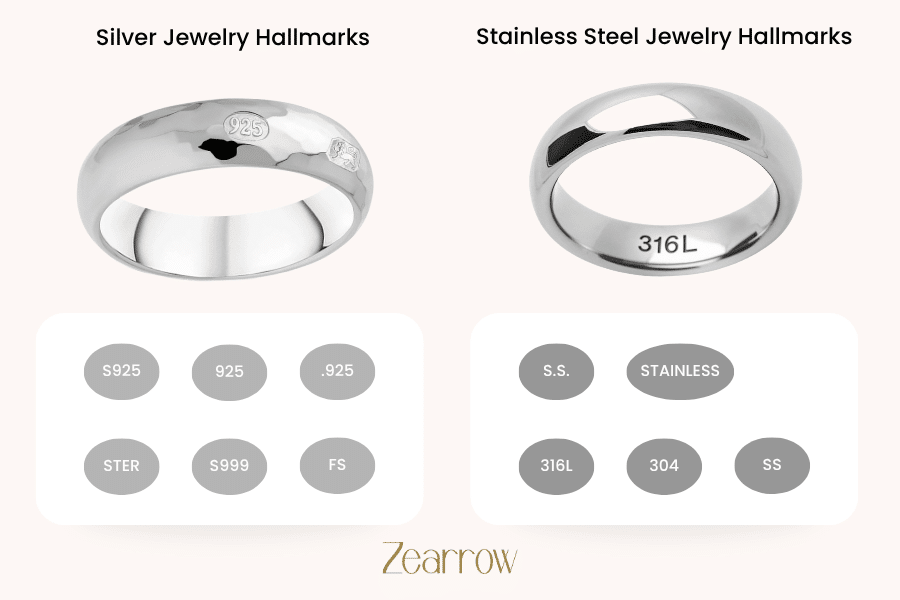
Silver Jewelry Hallmarks
S925/ 925/ .925/ STER
Pieces with a 925 mark for sterling silver are 92.5% pure silver. Silverware tends to have this purity level because it is durable enough to be used outside of wearable jewelry. S925 or STER is the most common mark for sterling silver since the added metals make the jewelry achieve a balance of attractiveness and toughness.
S999/ FS
FS jewelry marks indicate a piece with the highest purity level of sterling silver since FS is short for fine silver. Much like gold, pieces with S999 jewelry hallmarks are softer than average wearable accessories. The purity level is usually for made-to-order jewelry, which can be considered collection items among auctioneers.
Stainless Steel Jewelry Hallmarks
S.S. / STAINLESS
S.S. / STAINLESS is the general hallmark indicating stainless steel composition. Known for its durability, corrosion resistance, and hypoallergenic properties, it’s a popular choice for everyday-wear jewelry.
304/ 316L
Stainless steel jewelry hallmarks like 316L and 304 refer to the grade of stainless steel used in the piece.
- 304 Stainless Steel: A widely used, general-purpose stainless steel that does not contain molybdenum. It is commonly marked as 304, SS304, or simply Stainless Steel.
- 316L Stainless Steel: A premium-grade, low-carbon stainless steel enhanced with molybdenum (Mo) for superior corrosion resistance. Known as surgical or marine-grade stainless steel, it’s typically stamped as 316L, S316L, or Stainless Steel 316L—though some pieces may be unstamped and still sold as 316L.
Can Gold Plated Jewelry be Stamped 18K?
An 18K jewelry stamp means the gold material is not electroplated but integrated into the base metal. There are 18K GP, where a piece has a gold plating of 75% gold purity.
So, What Does 925 18K Mean on a Ring?
925 is a mark for sterling silver. Jewelry 925 18K hallmarks mean its base metal is silver and has an 18K gold plating. You can crack down other marking “codes” just like this.
What Does Jewelry Mark 585 Mean?
Jewelry marked 585 means it is made of 14 karat gold, containing 58.5% pure gold and 41.5% other metals for added strength and durability.
How is Stainless Steel Jewelry Marked?
The common mark for stainless steel is SS or 316L/304. Jewelry makers like Zearrow source ONLY from suppliers who utilize these stamps to make sure the stainless steel used is legit.
Does Jewelry Have to Be Stamped?
There are no universal regulations requiring a maker to place jewelry stamps on their work. However, hallmarking laws across various countries have strict regulations, requiring the mark to be accurate or a piece to contain the exact amount of metal indicated by its stamp. Those who outsource jewelry production from third-party factories should ensure that hallmarked pieces are authentic.
Can Fake Gold be Stamped?
Rogue sellers can put hallmarks on fake gold jewelry to trick customers into parting with their money. Always consider the jewelry’s reputation to avoid this type of seller.
As Jewelry Business Owners, What You Should Know?
Qualification Checks
Always check on the jeweler’s qualifications or years of experience in the industry. You can see from their company page and client feedback if the Jeweler is key to the success of business owners.
Jewelry Stamping Services
The manufacturer should have a jewelry stamp service. A marking helps you build a strong foundation of customer loyalty by providing transparency to your collection.
Certifications
To ensure the authenticity of your custom jewelry orders, ask for certificates and proof of stamped jewelry. You can request all of these when working with Zearrow. Contact Zearrow today and see how our genuine customized jewelry can cement your leading position in your target market.
Key Takeaway
Jewelry hallmarks tell you a piece’s metal consistency or its gold/silver purity. Each hallmark lets you know an item’s authenticity, durability, and potential value. Understanding these markings is crucial for anyone involved in buying, selling, or collecting jewelry. Those who sell jewelry can build custom trust with the transparency offered by jewelry stamps.
